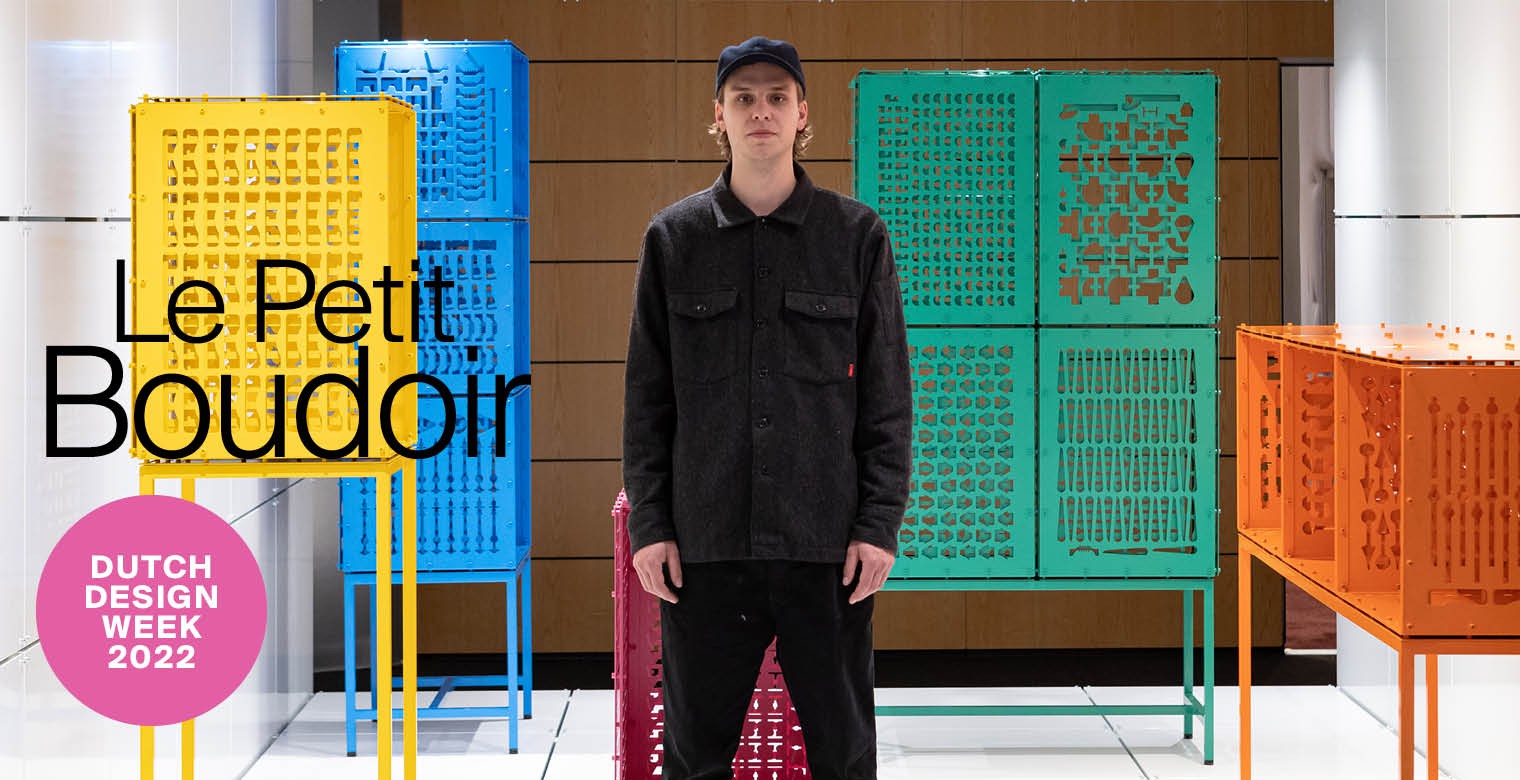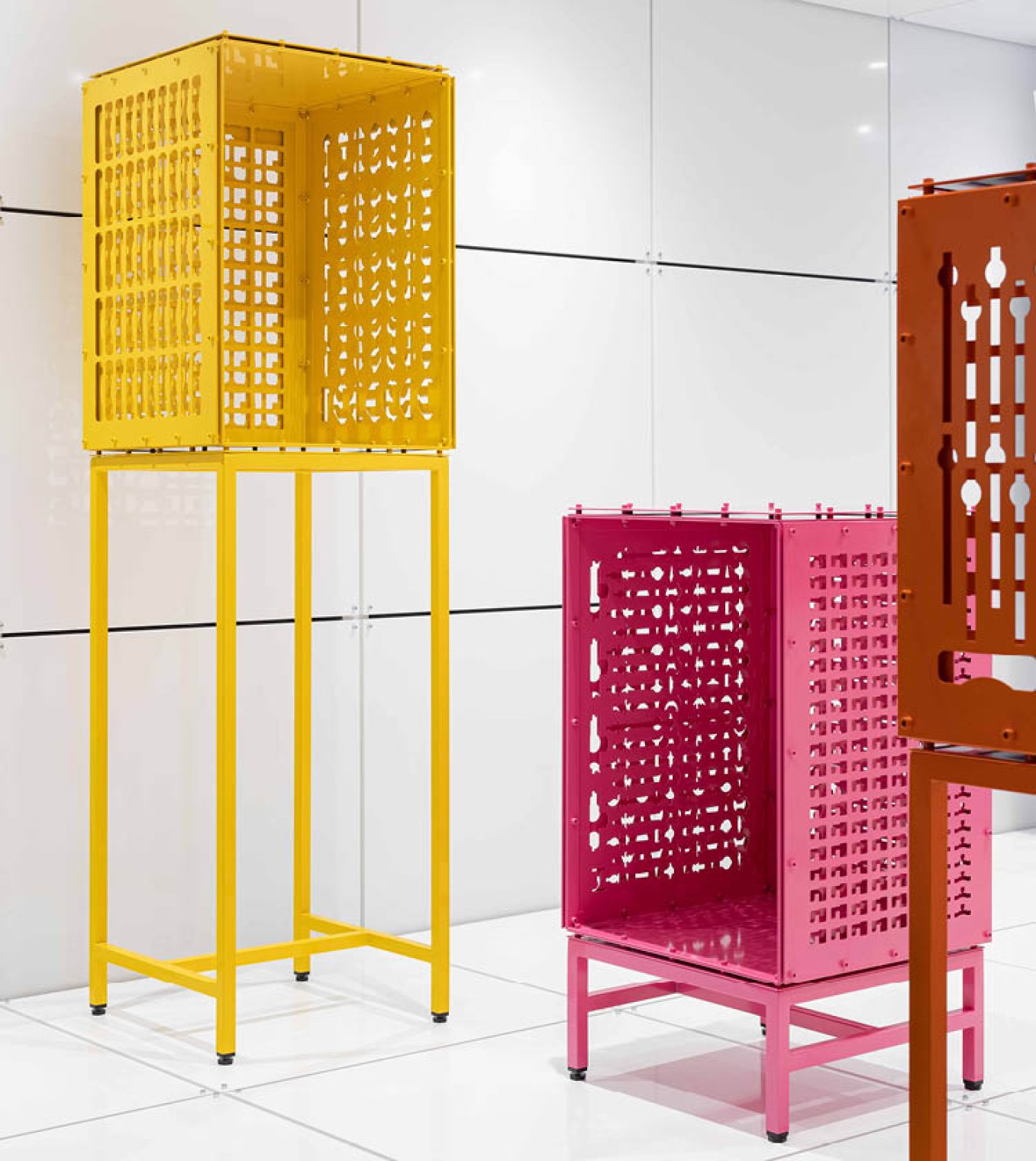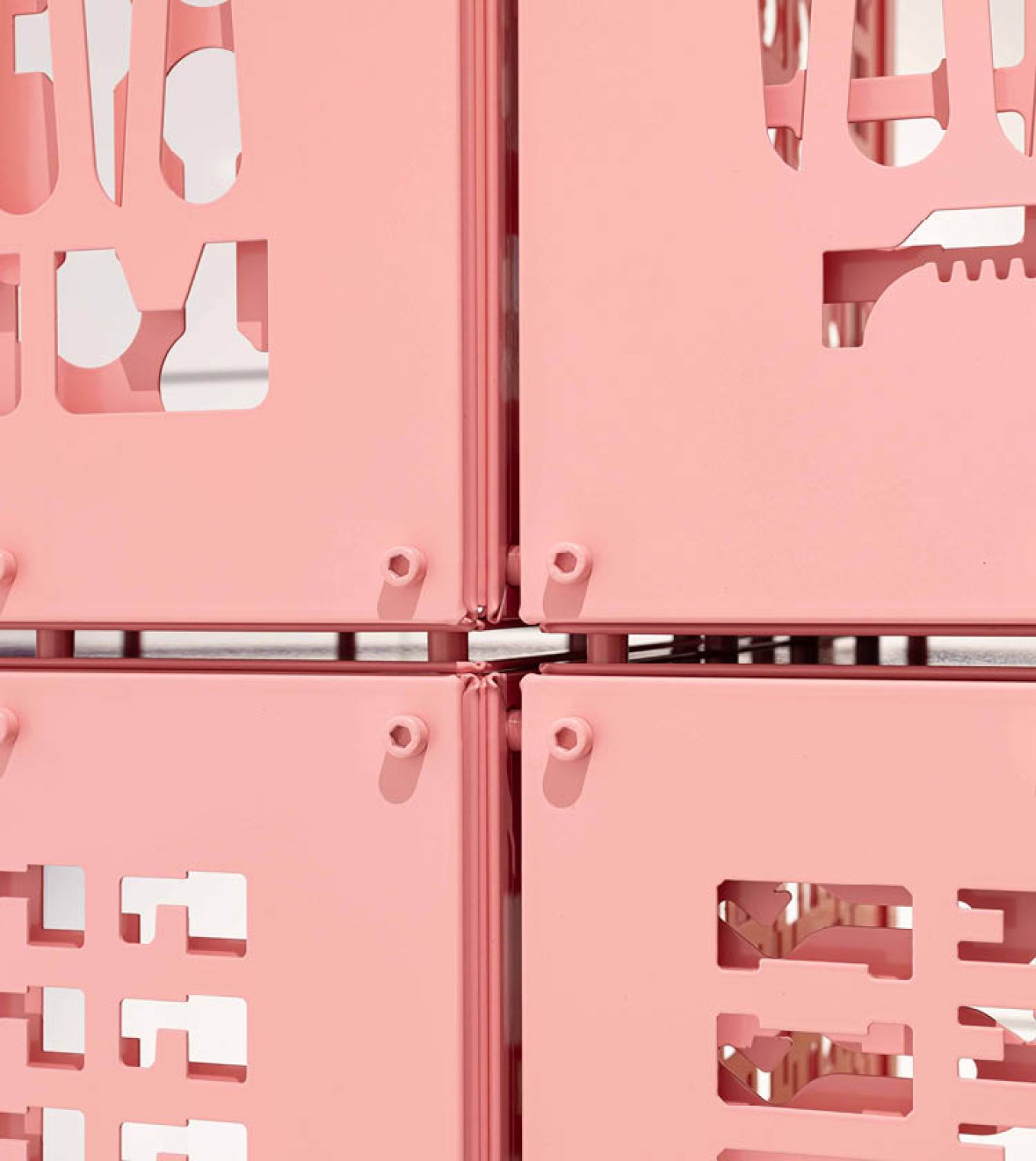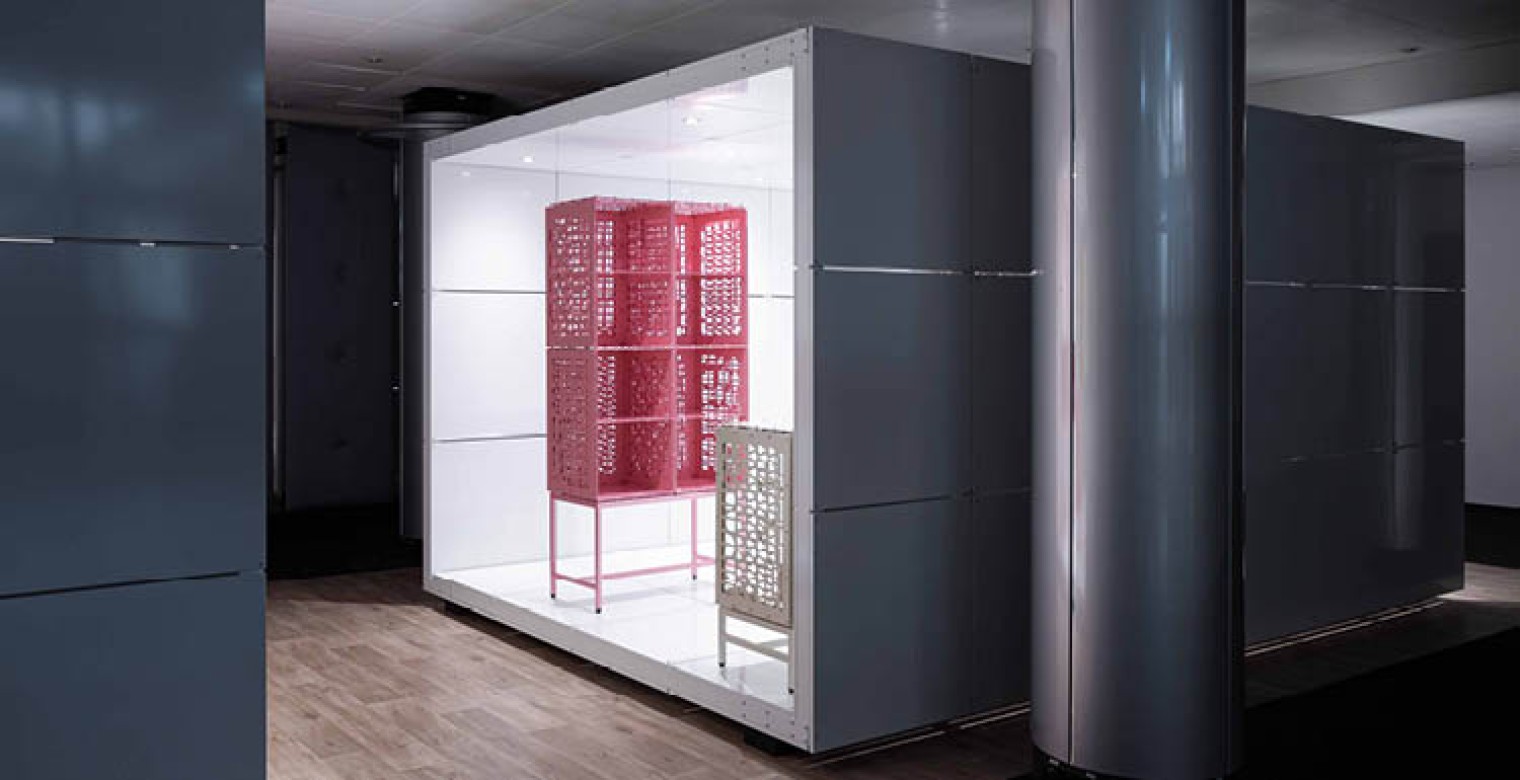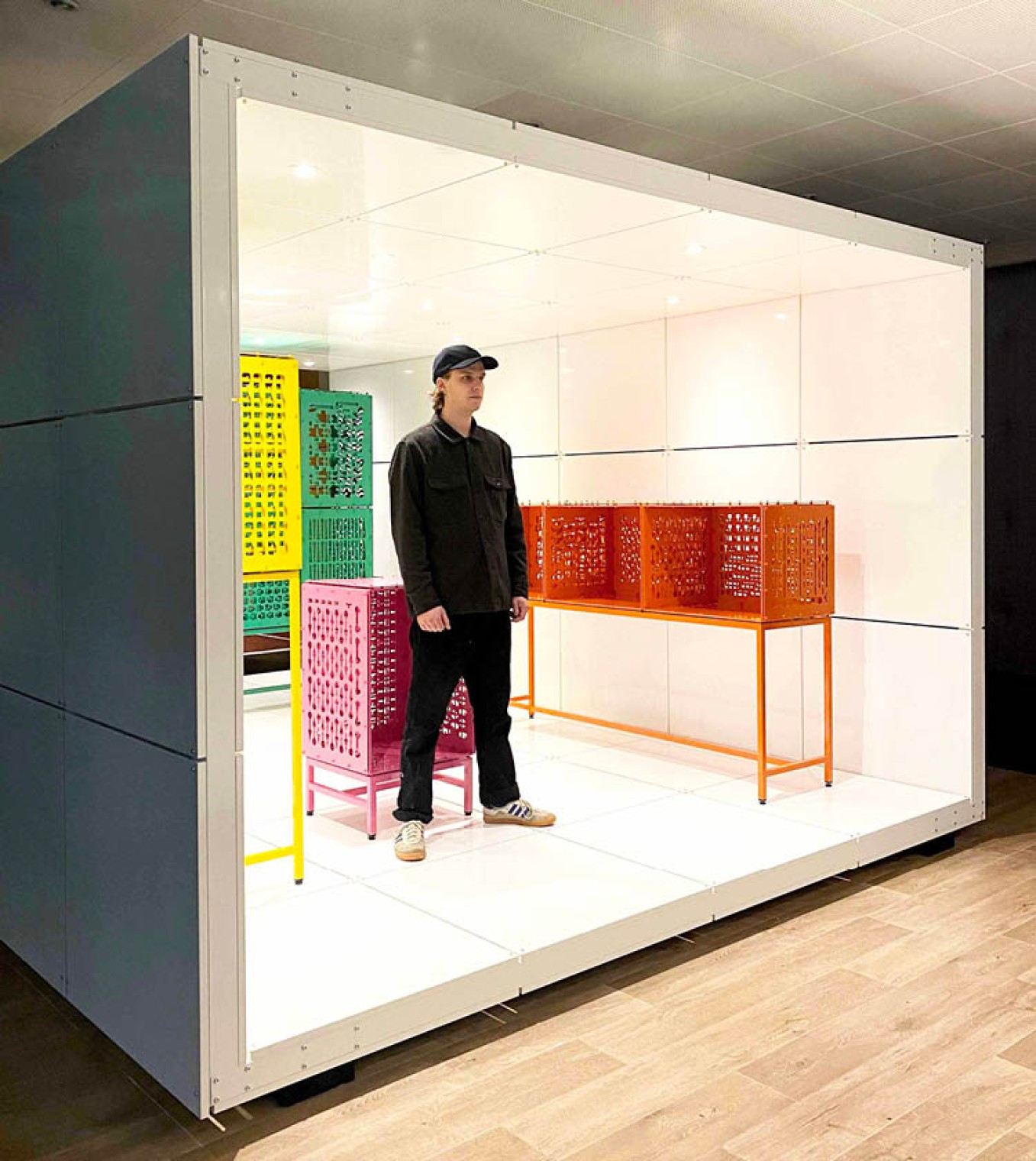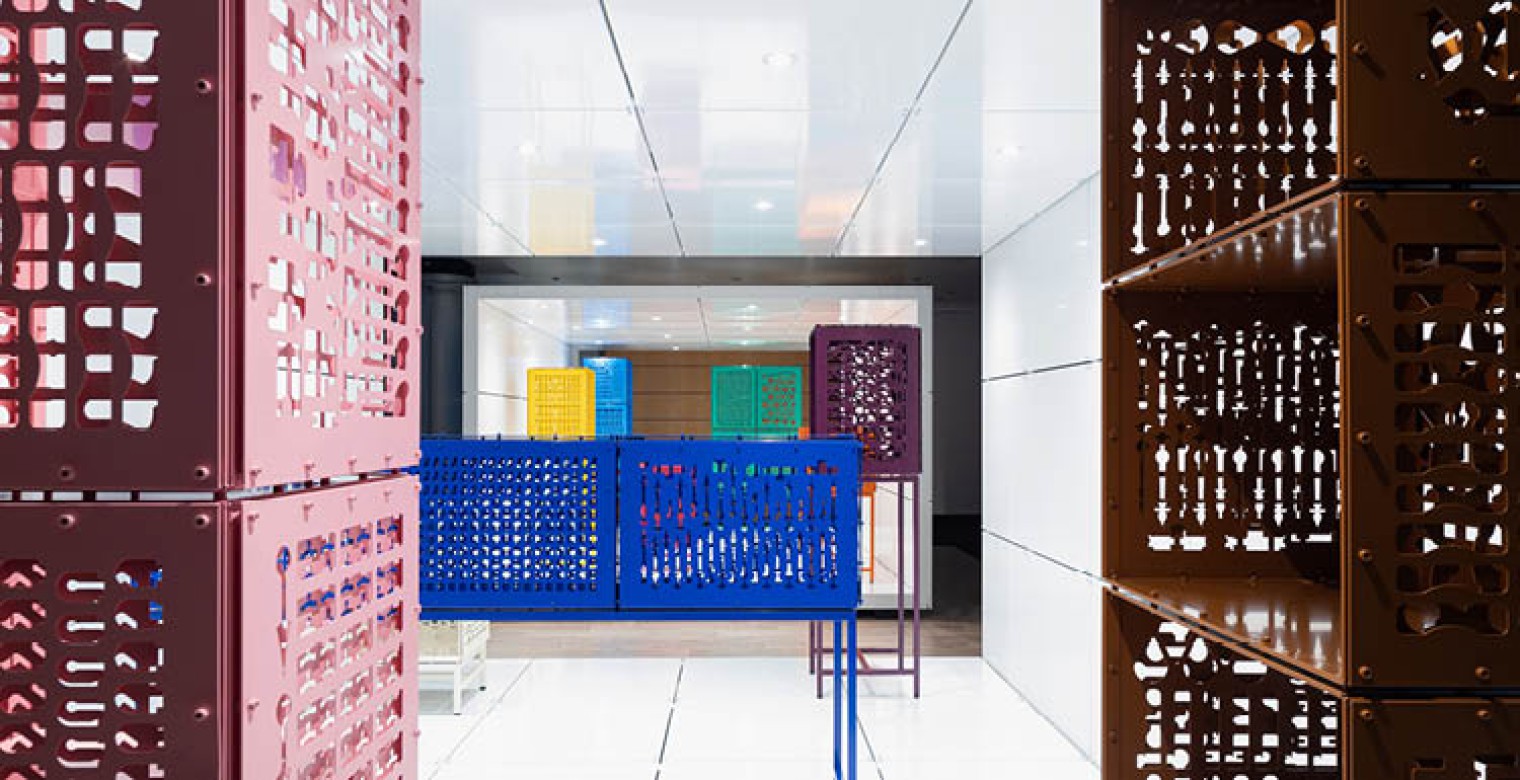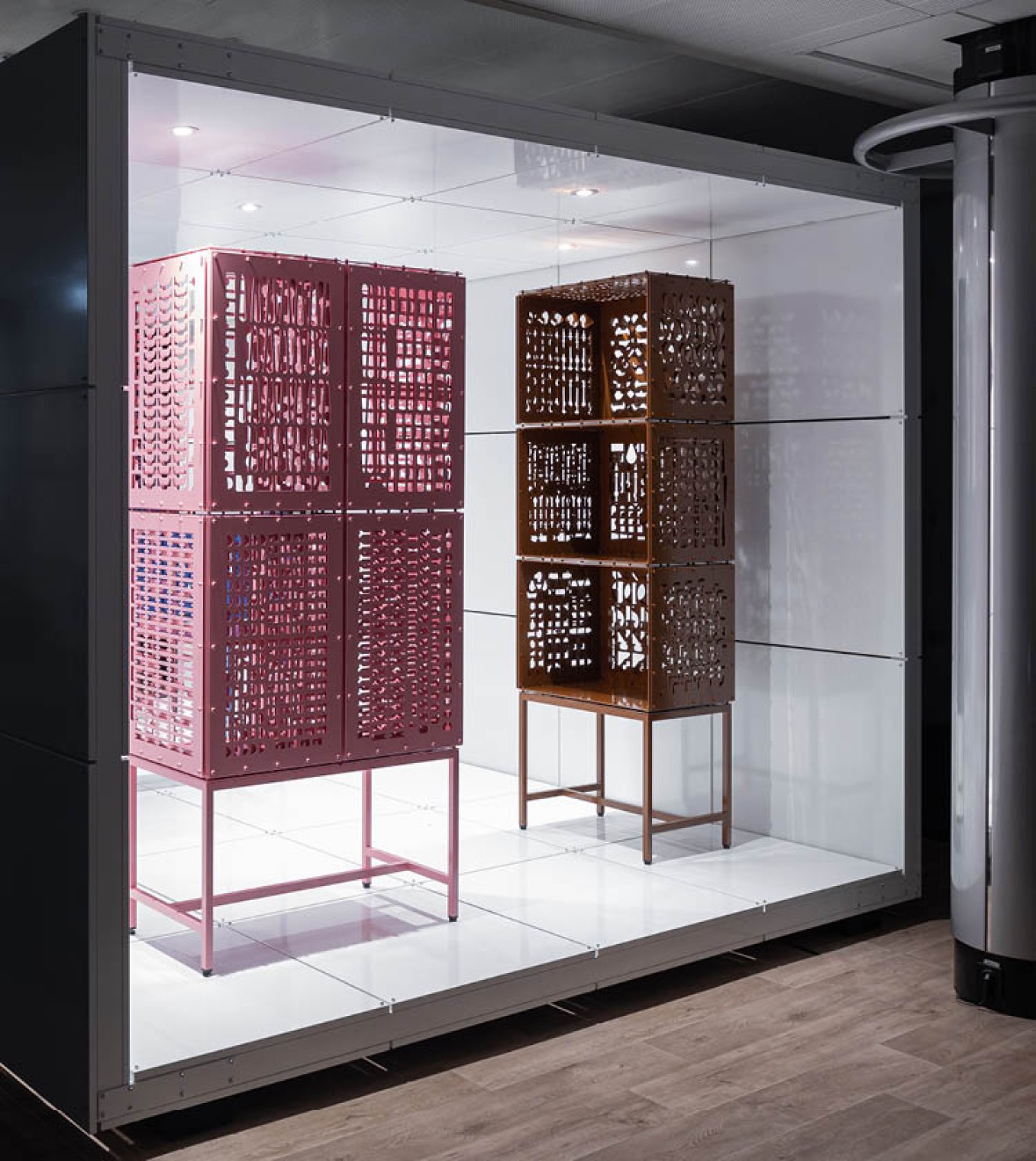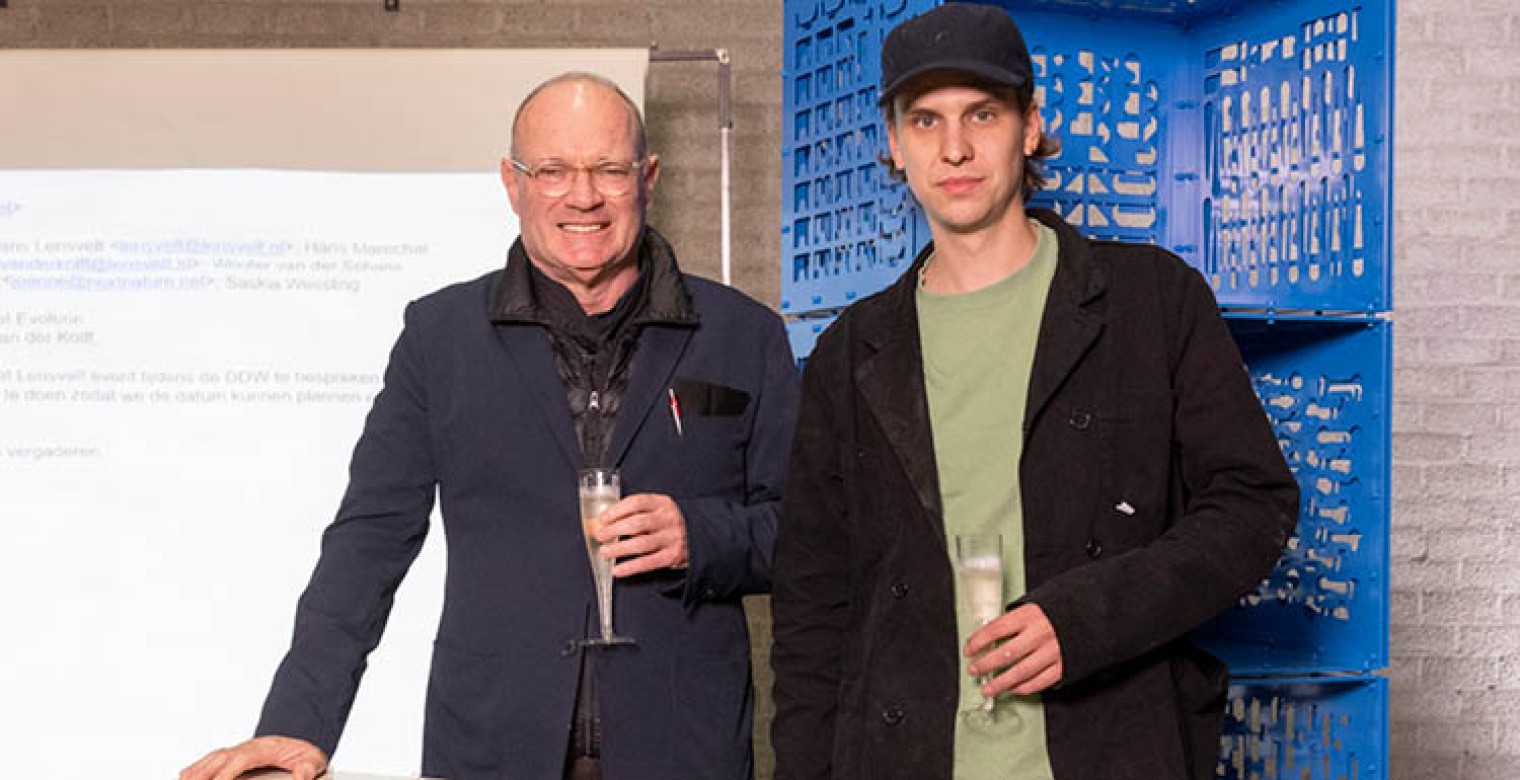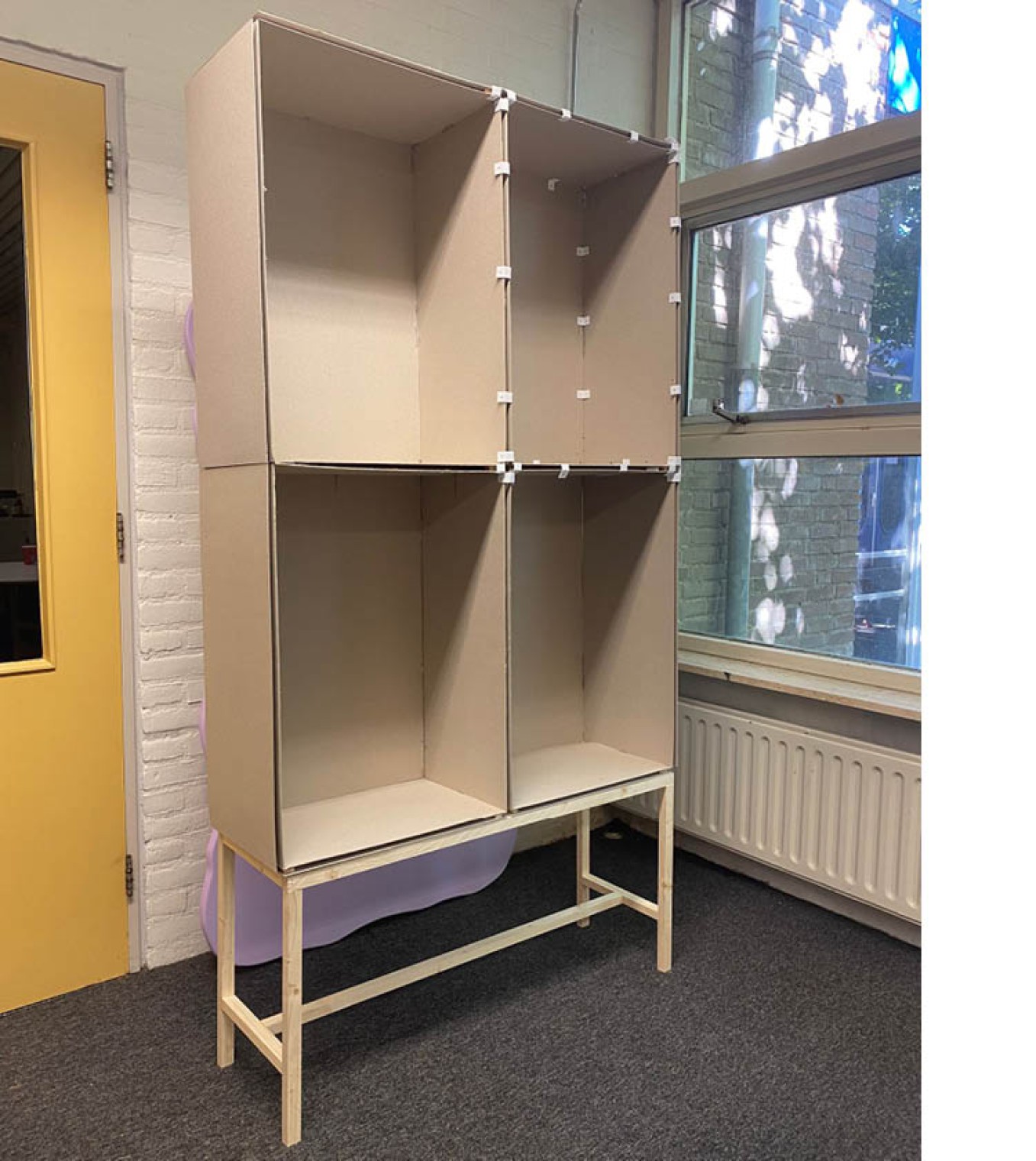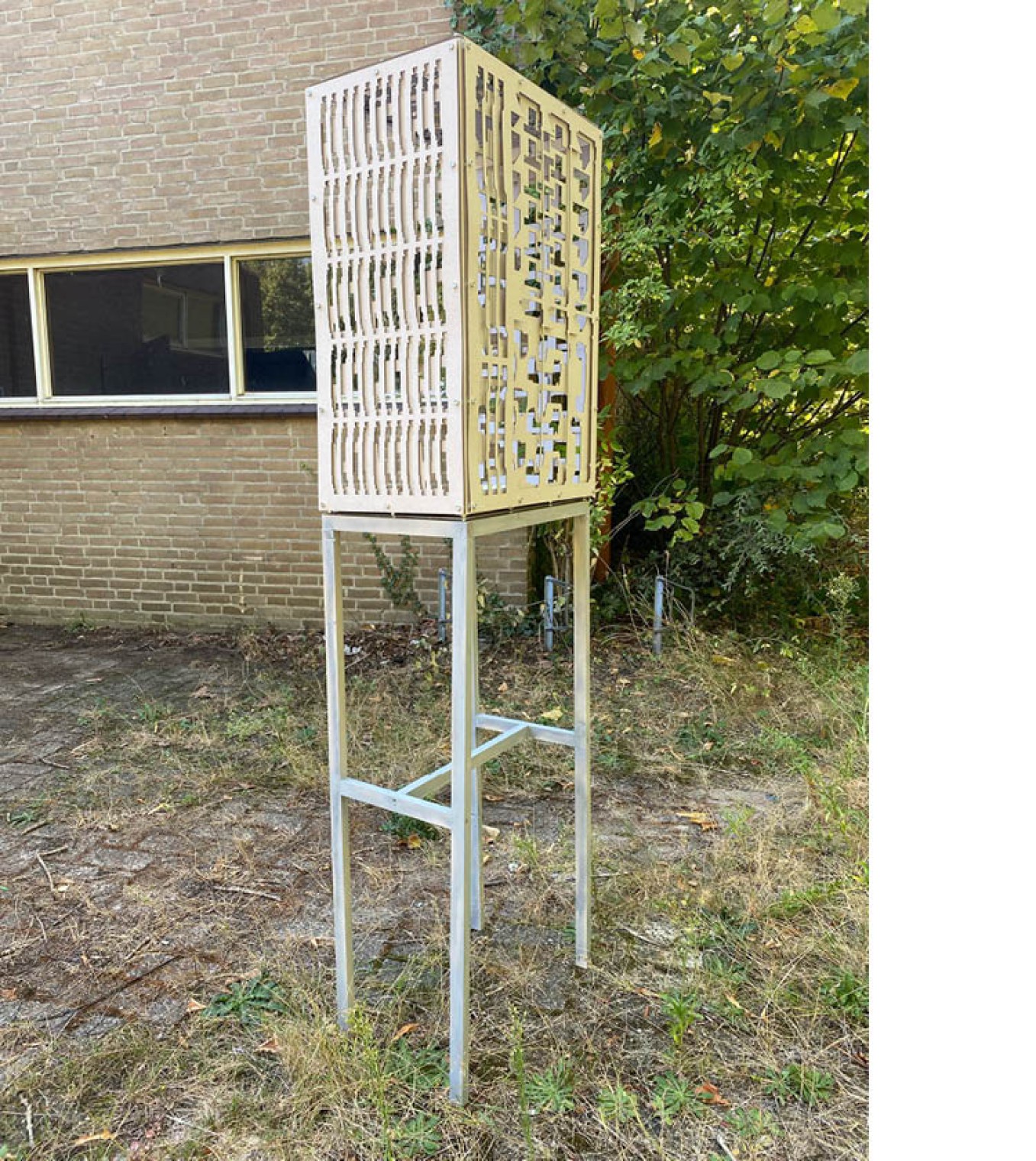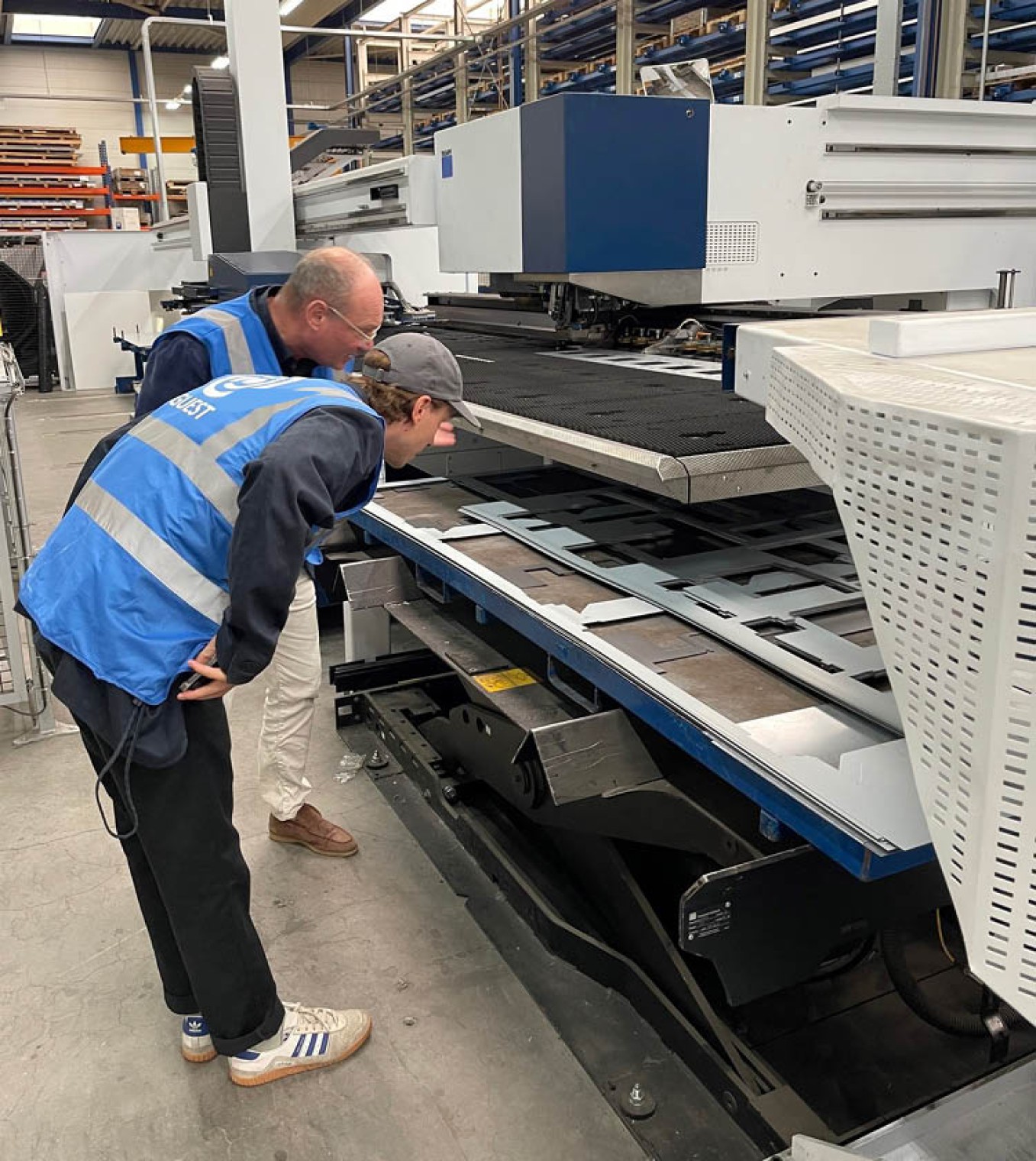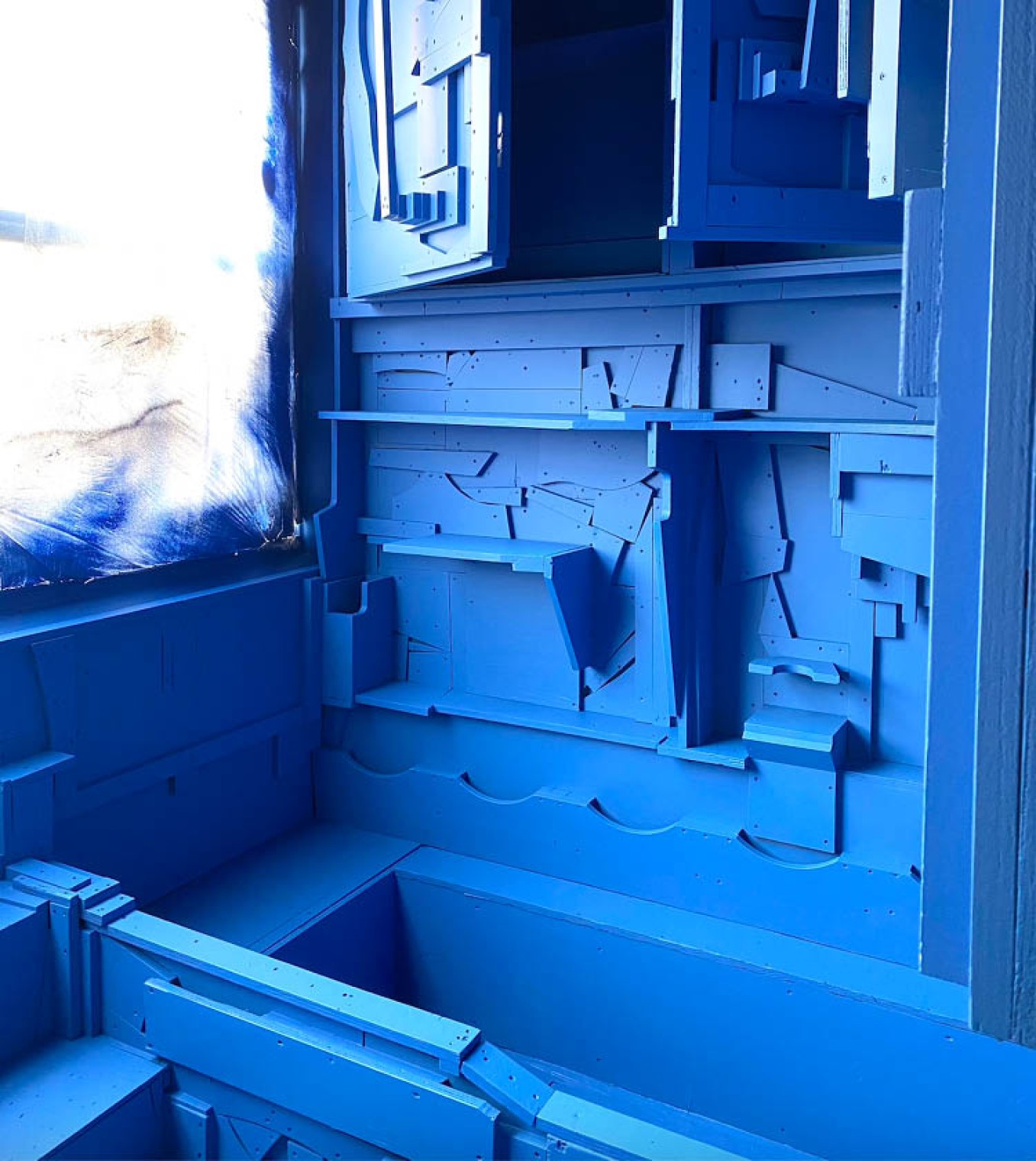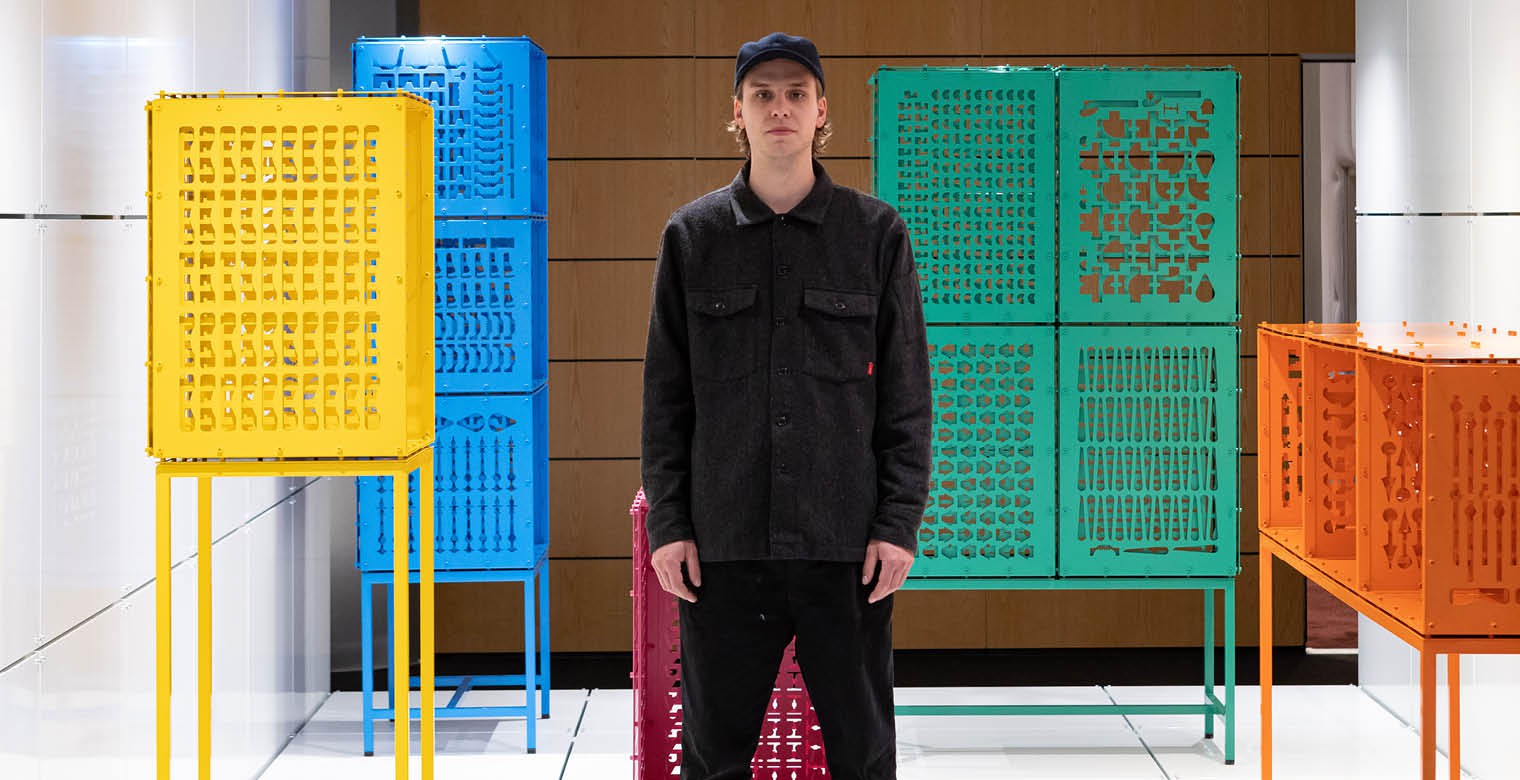The installation
Le Petit Boudoir is an installation created by emerging designer Teun Zwets. From the waste and residual material of Lensvelt's furniture production, Teun Zwets created ten objects especially for Dutch Design Week 2022. Within the framework of sustainability and (re)use of mainly residual material and waste, Teun was commissioned by Hans Lensvelt to create a way to turn waste into a functional and dazzling series of products.
The end result is so beautiful that it is reminiscent of jewelry or other special ornaments hence the name Le Petit Boudoir.
Teun Zwets (30) operates at the intersection of art and design.
He studied at the Design Academy in Eindhoven, where he developed his passion in the use of waste.
Lensvelt is an award-winning boutique furniture label founded in 1962.
Lensvelt provides architects and interior designers with products to create even better interiors, products designed by the most extraordinary artists, designers and architects.
tekst 1
Concept, design and material
Le Petit Boudoir for Lensvelt is an installation consisting of ten original cabinets. CEO Hans Lensvelt has always followed the work of Teun Zwets with great admiration. Fascinated by his method of working with residual materials and waste, Lensvelt made a personal request to Teun to create an installation together in the Evoluon for DDW 2022.
Lensvelt was looking for something unique with a sustainable and present-day focus. Hans and Teun set out to investigate how they could develop a new concept from residual waste.
Teun Zwets took a different approach for this collaboration. Normally he has a product or design in mind and looks for the waste that fits that idea. In this case, residual steel waste from Lensvelt's own manufacturing process was the starting point and Teun had to figure out a way to turn it into a functional series of products.
tekst 3
Recycling without gas
Zwets developed ten cabinets, using a basic modular form as a starting point. The cabinets are 100% constructed of steel and the entire system can be combined with one another.
Normally this steel is recycled, but that process takes a lot of energy. Steel cannot be brought to the right temperature by electricity to be recycled. It is being done by gas, which has additional disadvantages in the present time and the near future.
The idea of this collaboration is to show the market that production waste can be used on a large scale to develop beautiful new products of very high quality, avoiding the use of gas in the process.
tekst 5
Who is Teun Zwets
Teun Zwets (1992) is a designer who graduated from the Design Academy in Eindhoven in 2020. In his first year after graduation, his hands-on approach led to several exhibitions in Eindhoven. Because the Design Academy graduation show that year was cancelled due to the Covid pandemic, Teun built his own exhibition in an empty classroom where he could present his graduation collection Teunland. That same year he presented his work at De Kazerne in Eindhoven, and in 2021 he won the Kazerne Design Award, an annual incentive prize for designers who have recently graduated from Design Academy Eindhoven. An initiative of the Loyola Foundation, together with Kazerne. With his eye-catching design, Zwets is a talent to keep an eye on.
tekst 2
Teun talking trash
"I work intuitively, hands-on and like to think practically. I'm not someone who thinks too much or makes things complicated. By just doing things I find out if something works or not. I use a lot of material that people throw away. I love the beauty of other people's trash. All over the world, people throw their trash in nature and on the streets. There is so much potential in the materials on the street that people don't see. Also by using free and discarded material, the process of making is easier because you are not afraid to waste material because it is already waste. If something fails, you only lose time. Creating makes me happy and I want to make people happy with my pieces. Making a good design with the right materials is important. This way people can have objects in their possession for a very long time, the most sustainable design there is."
After graduating, Teun Zwets founded his design studio in Eindhoven and is now working on various collections, custom products and collaborations with brands such as the fashion company G-star and now Lensvelt.
tekst 6
Lensvelt's dedication to sustainability
Offering solutions that are good for people, our earth and the economy: that is what we are all about. We believe in a circular economy and find it important to work according to these principles.
The following is an overview of what we do in practice:
Aesthetic sustainability
We make furniture of the highest, sustainable quality. Sober, functional and logical in use. They are gems you don't just discard. That's what we call aesthetic durability. If a customer wants different furniture, we give our chairs and tables a second life. Or we dispose of the furniture as sustainably as possible.
Flexible suppliers
We avoid overproduction and choose flexible suppliers. This way we are not confronted with capacity that we have to fill at all costs.
Self-sufficient in energy
We invest in generating sustainable energy. For example, the roof of our building in Breda is full of solar panels. This allows us to produce our own electricity.
Environmentally friendly packaging and transport
Our own warehouse enables us to work with optimal order volumes. We use our own means of transport, which we use efficiently. We use as little plastic and cardboard as possible.
Less CO2 emissions
We encourage local entrepreneurship. Moreover, this way we reduce CO2 emissions.

